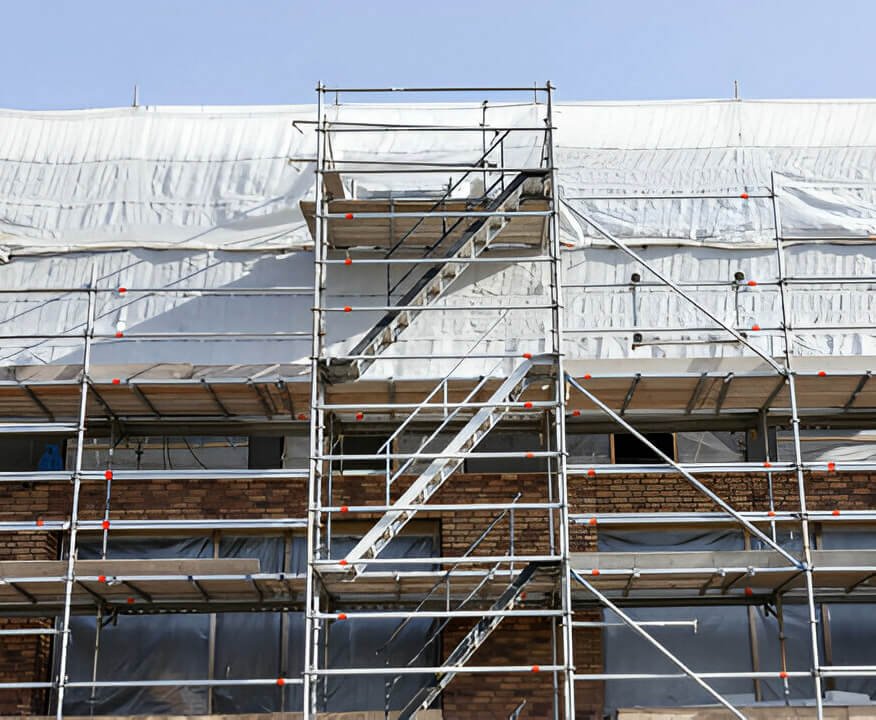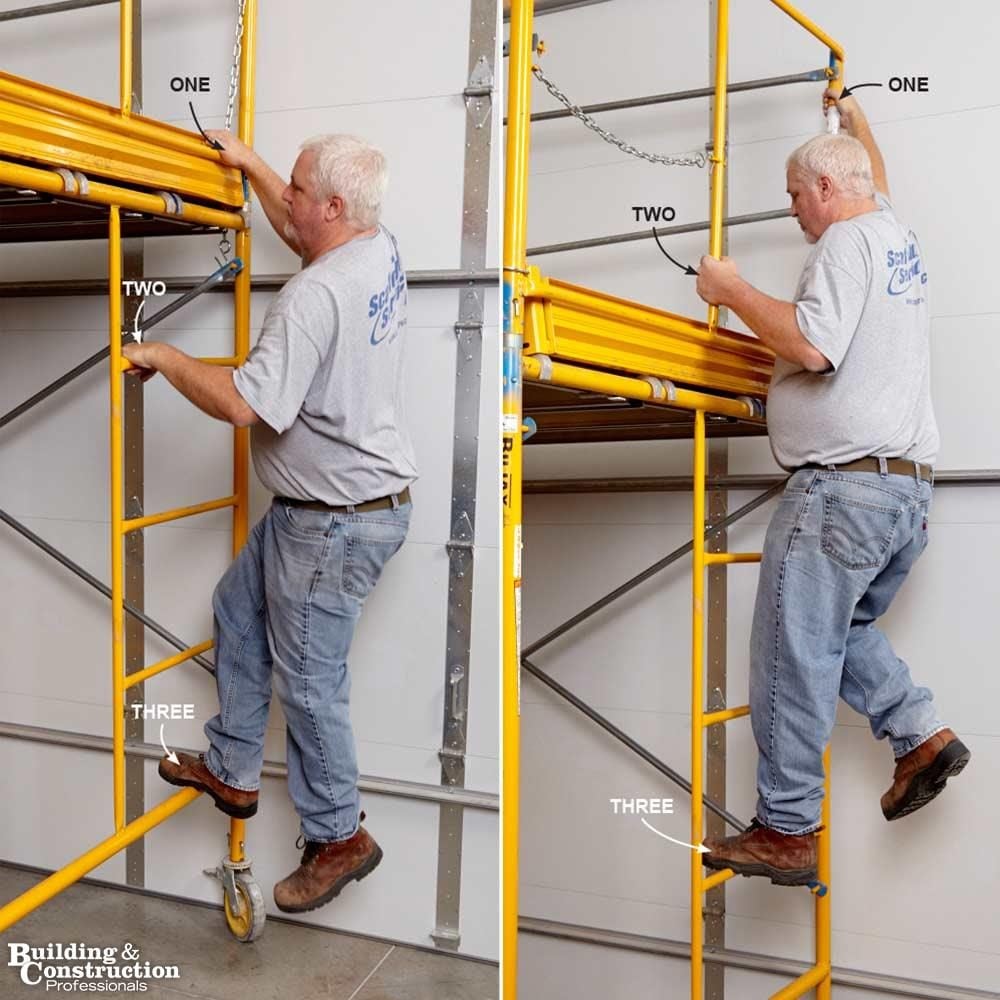A Comprehensive Overview to the Important Attributes of Scaffolding in Modern Building
The landscape of contemporary building increasingly depends on effective scaffolding systems that prioritize performance, security, and innovation. As tasks expand in complexity, understanding the essential attributes of scaffolding becomes essential for making sure employee safety and security and enhancing task timelines. This overview checks out various kinds of scaffolding, highlights crucial safety features, and takes a look at product advancements that add to efficiency and sustainability. However, the ramifications of these aspects extend much beyond simple construction techniques, triggering a better consider exactly how they affect overall project success and employee well-being.
Kinds of Scaffolding
Although scaffolding systems can vary commonly in layout and application, they normally come under numerous distinct groups that accommodate various building and construction demands - Scaffolding. The most typical types include sustained scaffolding, suspended scaffolding, and rolling scaffolding
Sustained scaffolding contains platforms supported by a framework of poles, which give a stable and raised functioning surface area. This type is usually made use of for tasks that need substantial elevation, such as bricklaying or external painting.
Suspended scaffolding, on the other hand, is made use of for tasks calling for accessibility to high altitudes, such as cleaning or repairing building facades. This system hangs from another structure or a rooftop, allowing workers to reduced or raise the platform as required.
Moving scaffolding features wheels that permit for very easy movement across a job site. It is specifically beneficial for jobs that require regular moving, such as indoor operate in big spaces.
Each type of scaffolding is created with certain applications in mind, making certain that building and construction jobs can be accomplished successfully and properly. Recognizing these classifications is important for choosing the proper scaffolding system to satisfy both project requirements and website conditions.
Trick Security Features
Safety and security is critical in scaffolding systems, as the potential risks related to operating at elevations can result in major accidents otherwise appropriately managed. Secret security features are necessary to make certain the wellness of workers and the integrity of the building and construction website.
Most importantly, guardrails are critical. These obstacles supply a physical safeguard versus falls, significantly reducing the danger of severe injuries. Furthermore, toe boards are often utilized to prevent tools and products from diminishing the scaffold, safeguarding employees listed below.
One more important part is making use of non-slip surface areas on systems. This function improves hold, especially in unfavorable weather conditions, therefore reducing the chance of slides and falls. Accessibility ladders must be firmly placed to assist in risk-free entry and exit from the scaffold.
Routine inspections and upkeep of scaffolding systems are additionally critical. These examinations guarantee that all parts are in excellent problem and operating properly, resolving any kind of wear or damage without delay.
Finally, proper training for all workers involved in scaffolding operations is necessary to make sure that they recognize safety and security methods and can determine potential risks. Scaffolding. Collectively, these functions create a more secure working setting and significantly alleviate dangers connected with scaffolding
Material Developments
Developments in material science have actually significantly affected the scaffolding sector, boosting both safety and security and performance in contemporary building. The introduction of high-strength steel and light weight aluminum alloys has actually reinvented conventional scaffolding systems. These materials are not just lighter, making them less complicated to set up and carry, but additionally give remarkable load-bearing abilities. This results in scaffolding frameworks that can support better weights while decreasing the danger of collapse.
In addition, innovative composite products, such as fiberglass-reinforced plastics, have actually become sensible choices. These products are immune to corrosion and environmental degradation, thus extending the lifespan of scaffolding systems, particularly in severe climate condition. Making use of such products adds to decrease upkeep expenses and makes sure consistent performance over time.


Layout Factors To Consider
Thinking about the scaffolder falls through roof complexities of contemporary building jobs, effective scaffolding design is extremely important to guaranteeing both capability and security. Layout factors to consider must incorporate various aspects, including lots capability, elevation, and the particular needs of the construction website. Each project provides unique obstacles, demanding a flexible method to scaffolding systems that can adjust to varying problems.
Architectural integrity is vital; for that reason, engineers must determine the lots that the scaffolding will certainly support, including employees, products, scaffold erecting and dismantling procedure and tools. The choice of materials plays a vital role in guaranteeing the scaffolding can hold up against these loads while remaining lightweight and sturdy. Additionally, the design should permit for easy accessibility and egress, facilitating the smooth movement of personnel and materials.
Security functions, such as guardrails and non-slip surfaces, ought to be incorporated to minimize risks of accidents. Additionally, the design must take into consideration the surrounding atmosphere, including potential dangers and surrounding structures. By addressing these layout factors to consider, building firms can enhance the effectiveness of scaffolding systems and advertise a much safer working atmosphere, inevitably contributing to the overall success of the task.
Upkeep and Assessments
The performance of scaffolding systems expands past preliminary design and execution; continuous upkeep and normal assessments are important to guaranteeing their continued performance and safety and security throughout the period of a job. Normal assessments ought to be conducted by certified employees to identify any kind of indications of wear, damage, or instability that could compromise the stability of the scaffolding.
Maintenance procedures should include routine checks of architectural elements, such as installations, planks, and frameworks, guaranteeing that all elements continue to be free and safe and secure from rust or various other wear and tear. In addition, the performance of safety and security features, such as guardrails and toe boards, need to be assessed to guarantee conformity with security regulations.
Paperwork of all examinations and maintenance activities is crucial for accountability and governing compliance. A methodical strategy to record-keeping not just help in tracking the problem of the scaffolding but also supplies essential proof in case of a case.
Ultimately, establishing a detailed upkeep and examination routine will dramatically reduce the risk of accidents and improve the general safety and security of the construction site. By prioritizing these practices, building managers can safeguard workers and support the job's stability.

Final Thought
To conclude, the essential features of scaffolding in modern building and construction include a range of crucial components, including varied types, vital safety devices, material advancements, and thoughtful style considerations. Highlighting safety with guardrails and non-slip surfaces, alongside innovations in materials like high-strength steel, boosts both performance and sustainability. Routine upkeep and examinations are important for making certain architectural integrity and security on building and construction websites, ultimately promoting efficient job implementation and advertising the health of workers.
The landscape of contemporary building and construction progressively depends on reliable scaffolding systems that focus on development, security, and effectiveness.Advancements in material science have actually significantly influenced the scaffolding market, improving both safety and efficiency in modern construction. Overall, these product innovations not just boost the efficiency and security Full Article of scaffolding systems however also line up with the industry's press in the direction of sustainability, as lots of contemporary materials are created to be more eco pleasant.
Thinking about the complexities of modern-day building and construction jobs, effective scaffolding design is paramount to making certain both capability and safety.In conclusion, the essential attributes of scaffolding in contemporary construction incorporate an array of essential aspects, including varied types, vital safety and security devices, product innovations, and thoughtful design factors to consider.